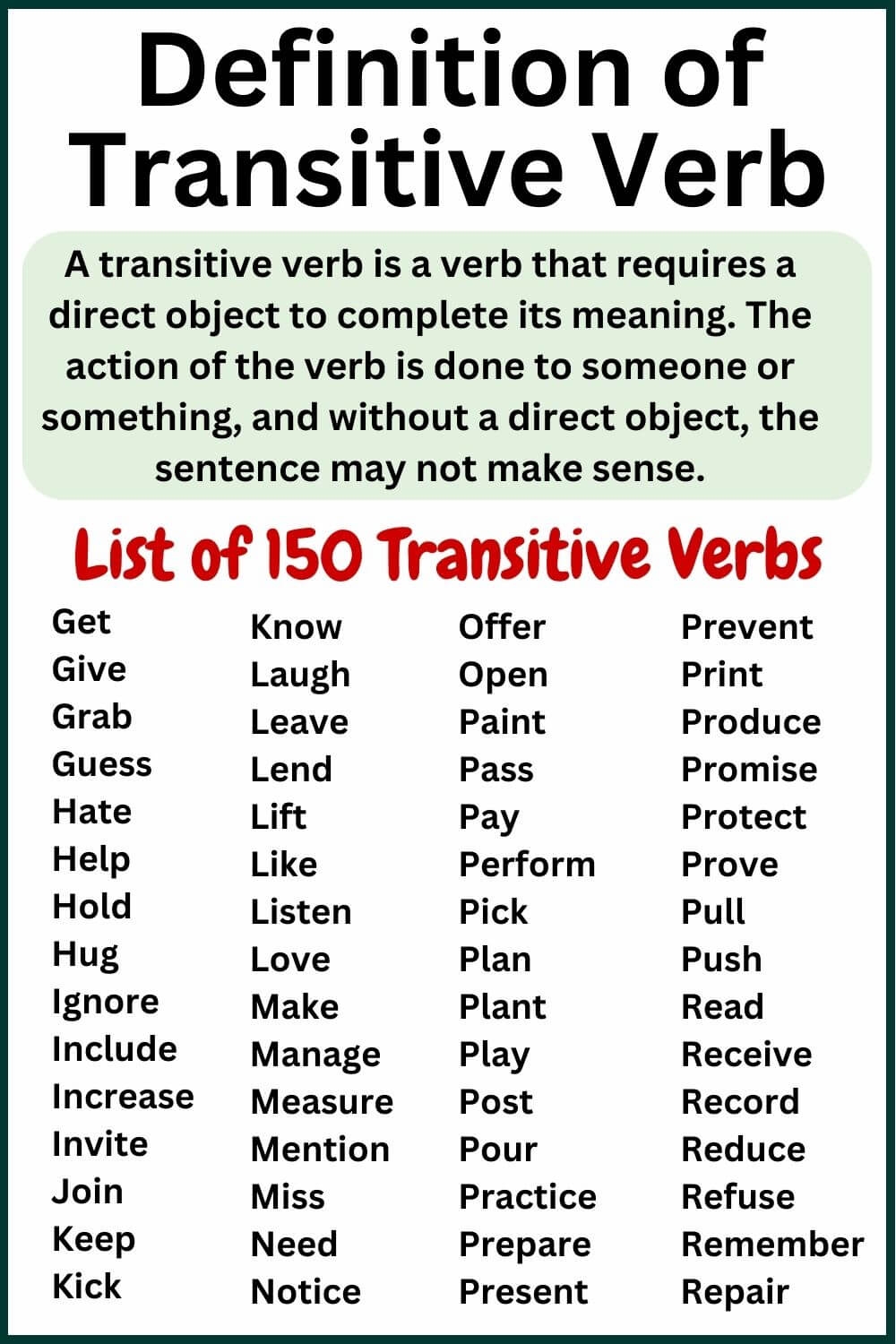In English grammar, a transitive verb is a verb that requires one or more objects to complete its meaning. These objects can be nouns, pronouns, or phrases that receive the action of the verb. Transitive verbs are an essential part of sentence construction and play a crucial role in conveying clear and concise messages.
Understanding transitive verbs is important for improving your writing and communication skills. By knowing which verbs are transitive, you can ensure that your sentences are grammatically correct and effectively convey your intended message.
List of Transitive Verbs:
- eat
- write
- read
- paint
- build
Transitive verbs can be used in a variety of ways to express action in a sentence. They can help specify who or what is performing the action and what or whom the action is being performed on. For example, in the sentence “She eats an apple,” the transitive verb “eats” requires an object (apple) to complete its meaning.
It is essential to differentiate transitive verbs from intransitive verbs, which do not require an object to complete their meaning. Intransitive verbs stand alone in a sentence and do not transfer the action to an object. For example, in the sentence “She sleeps,” the verb “sleeps” is intransitive as it does not require an object to make sense.
Using transitive verbs effectively can enhance the clarity and precision of your writing. By selecting the appropriate transitive verbs, you can convey your message in a concise and impactful manner. Practice identifying transitive verbs in sentences to improve your grammar skills and enhance your communication abilities.
In conclusion, transitive verbs are an essential component of English grammar that help convey action and meaning in sentences. By understanding and utilizing transitive verbs effectively, you can enhance the quality of your writing and communication. Take the time to learn and practice using transitive verbs in your sentences to become a more proficient and articulate communicator.
